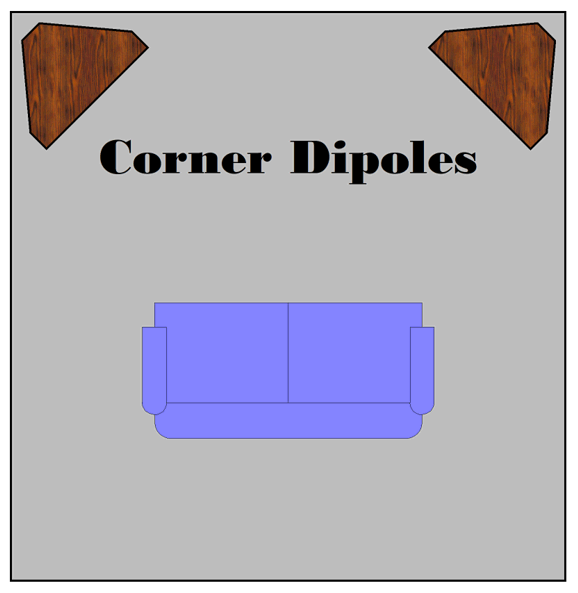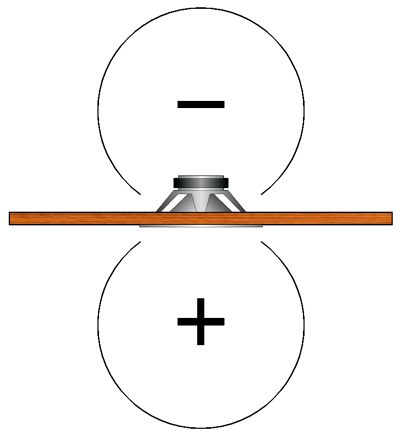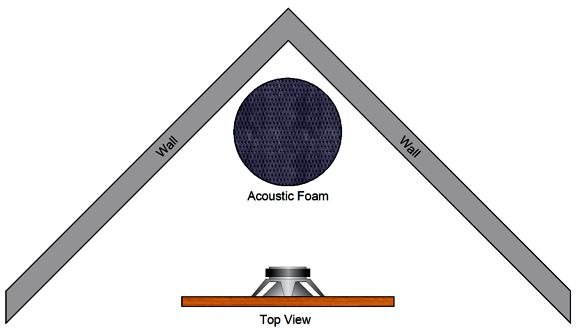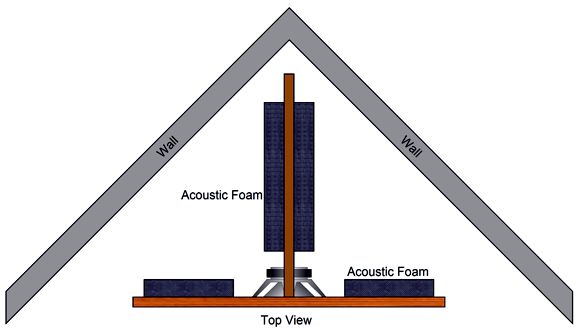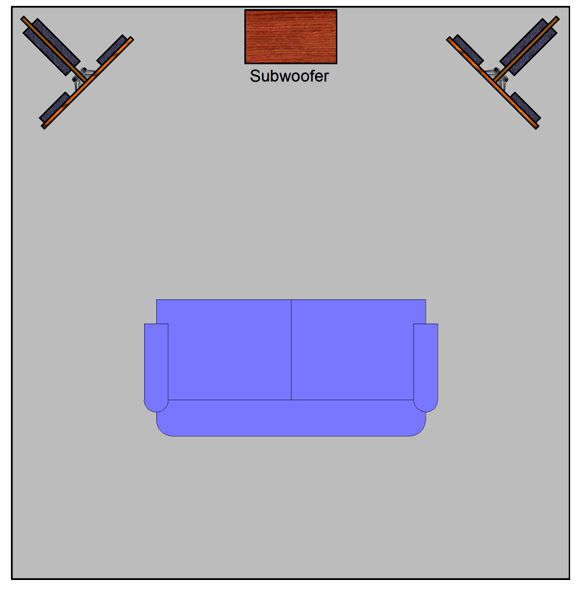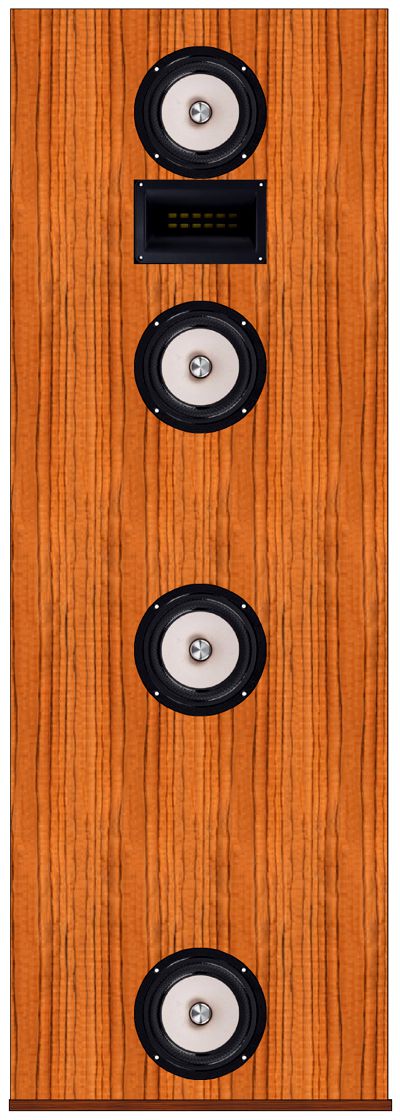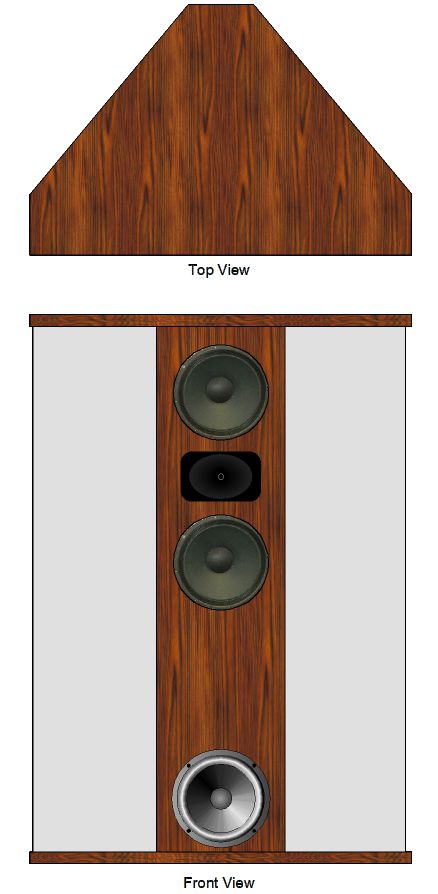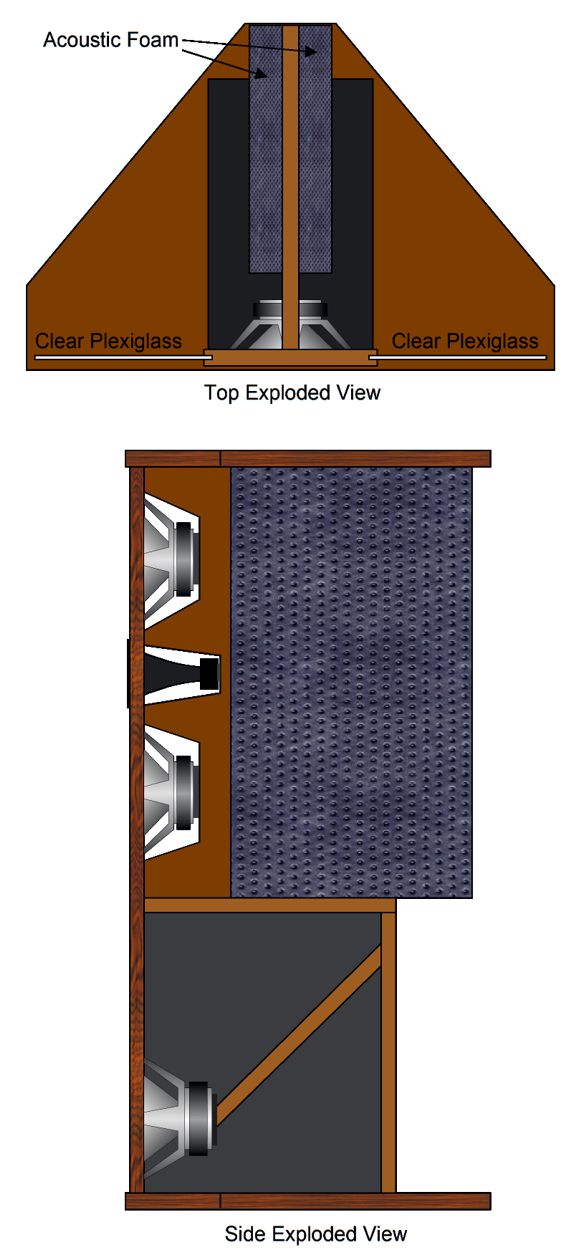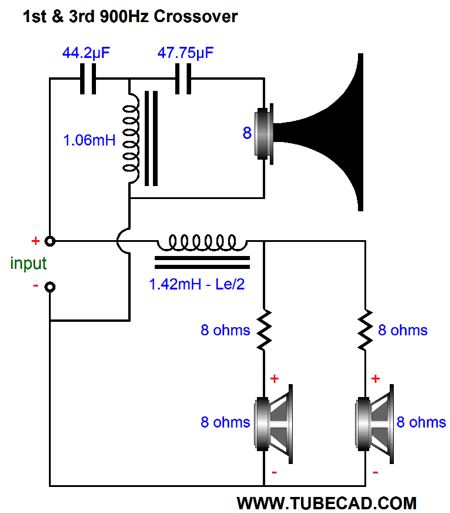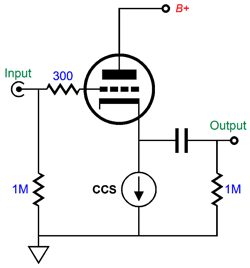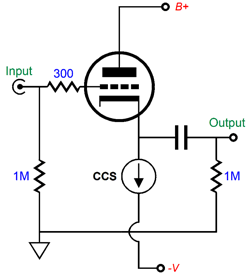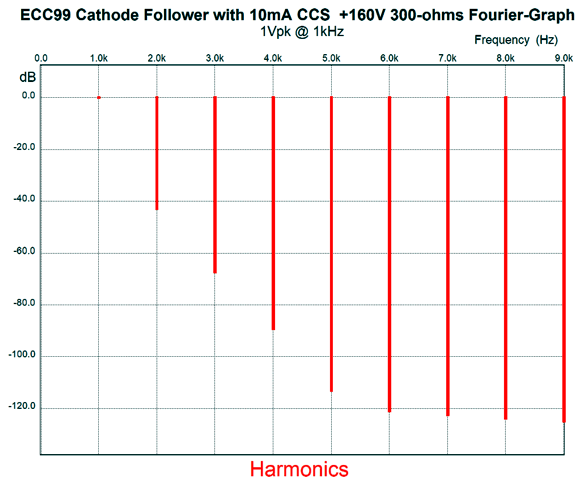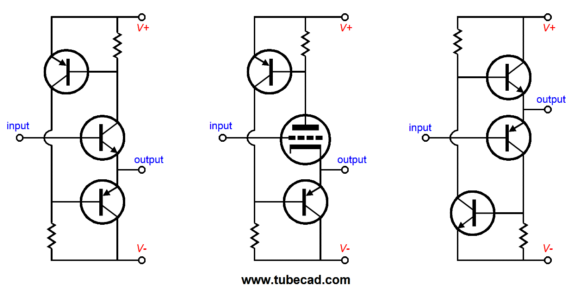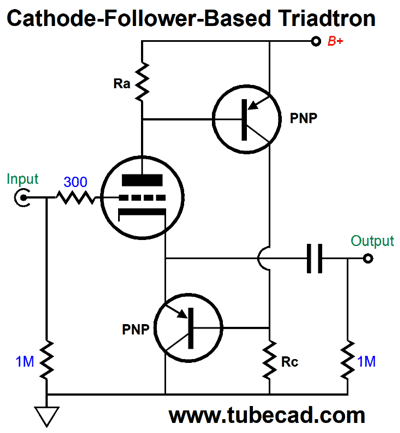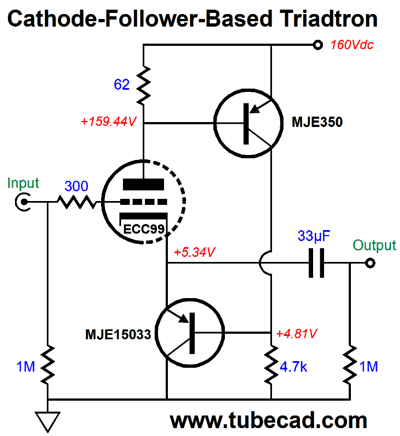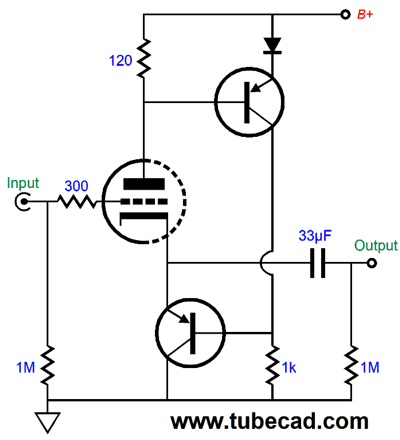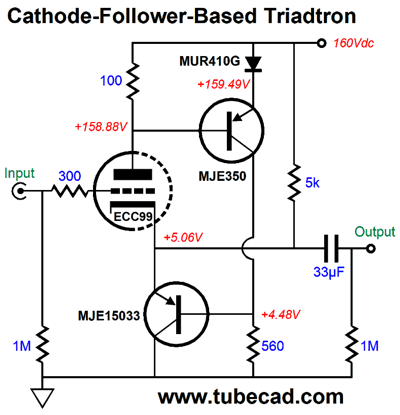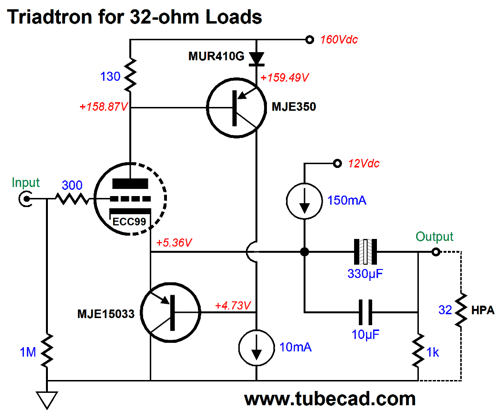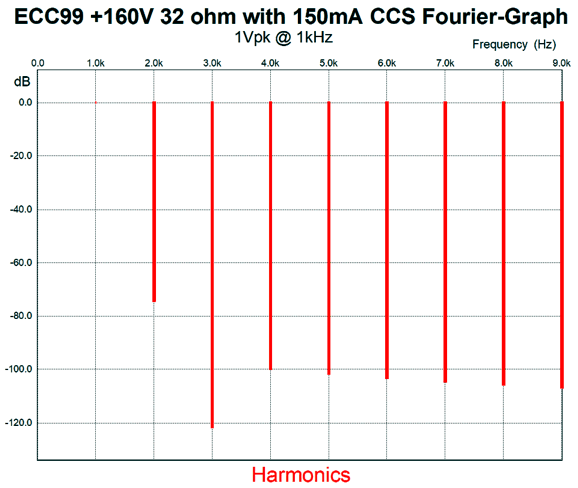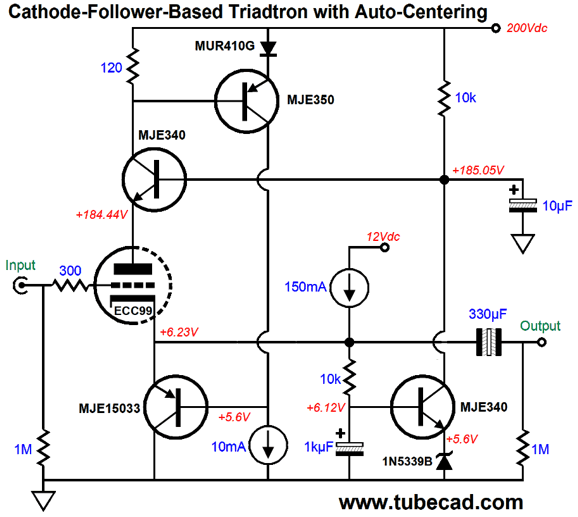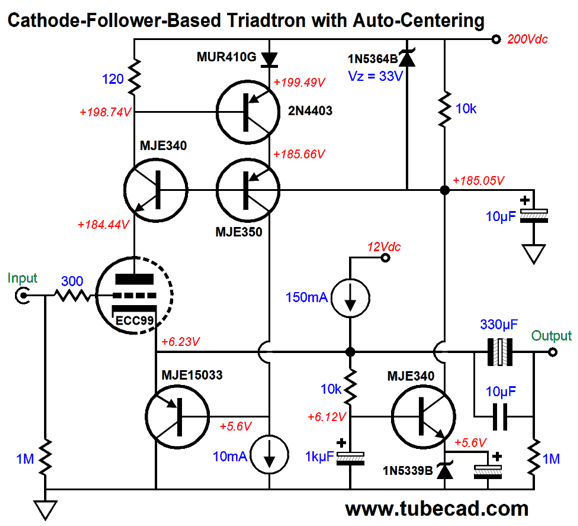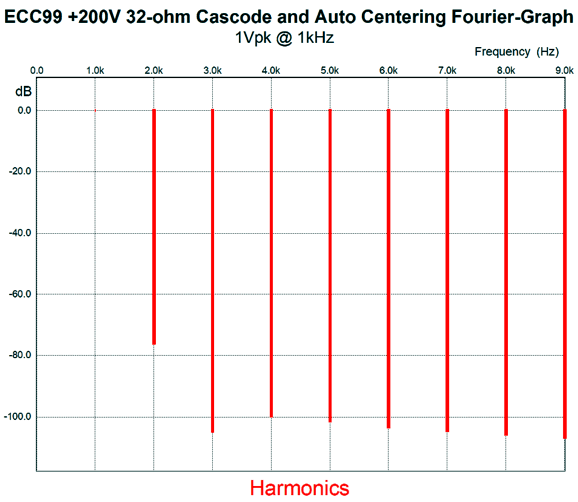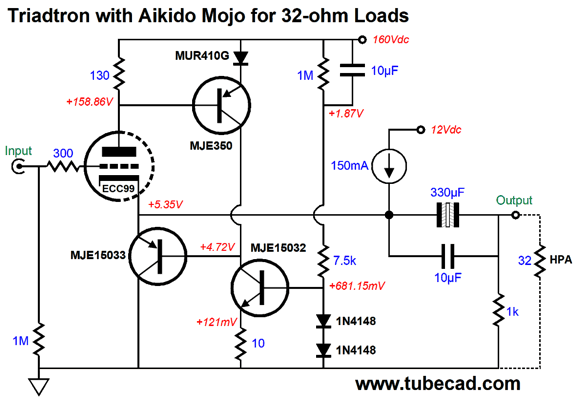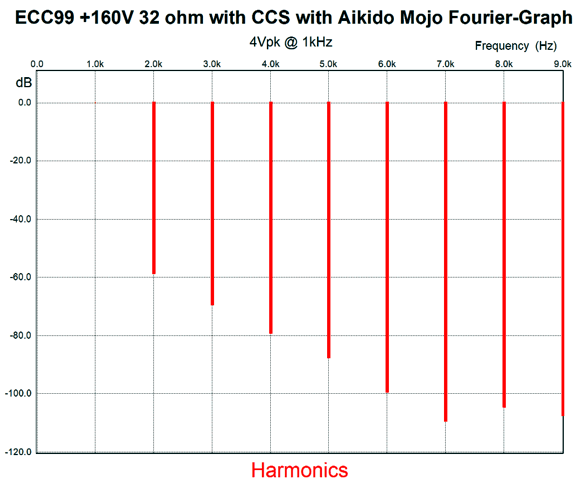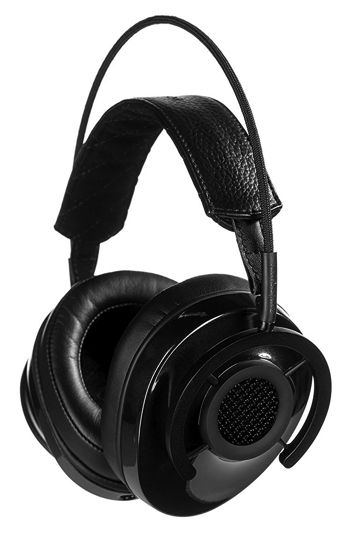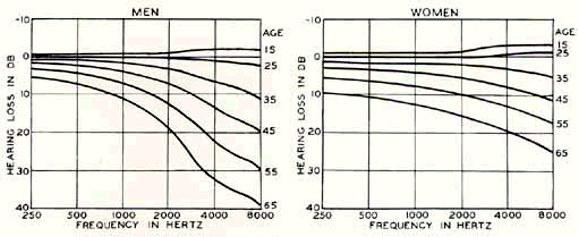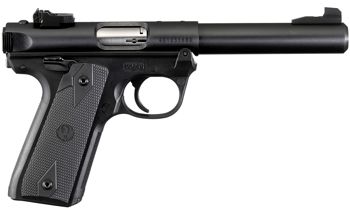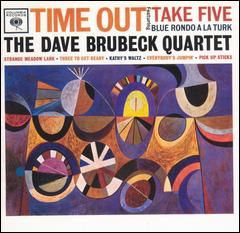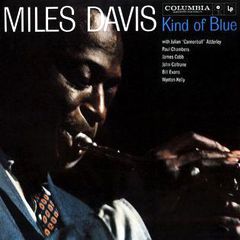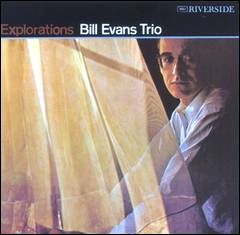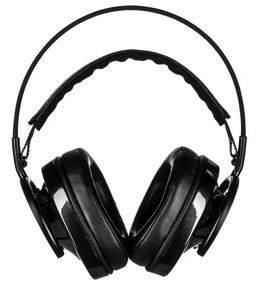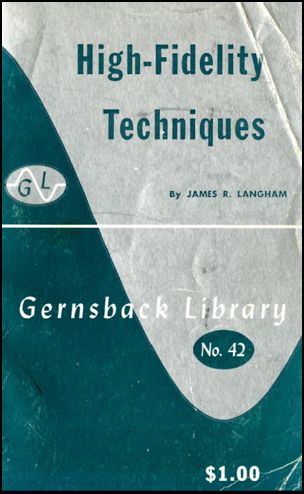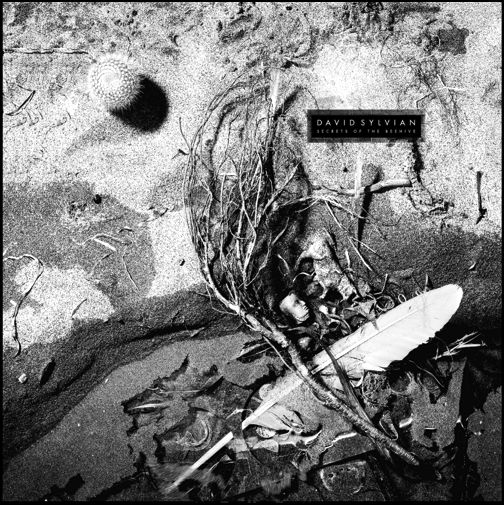| John Broskie's Guide to Tube Circuit Analysis & Design |
|
07 May 2019 Post 464
A Corner Dipole Loudspeaker
Well, what would happen if we placed a dipole speaker in the corner, not so close as to trap the rear sound radiation, but far enough away so that the rear sound at the dipole's sides would, when combined with the front radiation, cancel? The rear waves would cause some trouble, as they would bounce back towards the dipole, which would truly bother a planar loudspeaker, such as an electrostatic type; but as a dynamic driver would constitute so much less of the dipole surface area, we can worry a lot less. One workaround, nonetheless, would be to place a tall roll of sound-absorbing batting behind the dipole.
One problem with flat dipoles is that the panel tends to rock back and forth. The workaround is to place center panel perpendicular with the dipole panel.
The T shape stabilizes the panel and would prove useful for adhering acoustic foam to absorb the reflected sound waves. Okay, what if we only the dipole panel for loading the lower-midrange and letting a subwoofer handle frequencies below 150Hz?
Such an arrangement would allow us to use a much narrower panel, say 18 inches wide.
Four 5-inch mid-woofers cover the frequencies from 150Hz to 4kHz. The spacing should be set to destructive ratios, for example with spacings from the top to bottom drivers of 5in, 7in, 13in, and 17in. The tweeter is a horn-load ribbon design, rotated 90 degrees to limit horizontal dispersion and promote vertical dispersion. (Usually, we desire a dipole speaker whose rear radiation matches the front radiation in frequency bandwidth, but not with this corner placement.) The subwoofer would only reproduce frequencies below 150Hz and could be much less efficient than the rest of the drivers, as it would be self powered. Another possible corner dipole would be much larger and would hold two long side panels made of either sheet glass or Plexiglas (i.e. clear acrylic sheet) that make the dipole look much smaller, while still providing more loading for low frequencies, so a 100Hz crossover could be used between the two mid-bass drivers and the heavy woofer.
The heavy woofer gets its own sealed enclosure and acoustic foam adheres to the T plank of wood.
A horn-loaded high-frequency driver is shown, which would deliver high SPLs. The two mid-woofers would be professional-audio drivers and would each be placed in series with an 8-ohm power resistor. Why? We need to obtain an 8-ohm impedance for the entire loudspeaker and we wish to increase the drivers' Qes, which in turn would increase the Qts, so the mid-bass would prove less pinched. The subwoofer could be driven by an internal power amplifier, which would eliminate the need for large inductors and allow for precise bass level settings. Post 461 showed how an internal subwoofer amplifier could undo a 100Hz high-pass filter placed in front of the main power amplifier. Such a setup could allow for a truly minimalist crossover for the mid-woofers, as a passive crossover might not be much more than a single inductor for the two mid-bass drivers. The high-frequency horn would need a steep high-pass filter, say 3rd-order at 900Hz.
Actually, I would like to try a dipole with folded panels.
The idea here is to use three long strips of wood for the front baffle, which would prove sturdier and offer more narrow center section. As shown above, four woofers are used in in a push-pull configuration, wherein the woofer both work in phase, the two drivers that radiate out into the room from their backs are wired out of phase. Why bother? Woofers give rise to 2nd harmonic distortion due to their preference for one direction of travel. Well, placing them in this configuration cancels the distortion to a large degree.
Triadtron Based on the Cathode Follower
The constant-current source both auto-biases the cathode follower and does not reduce the load impedance the way a cathode resistor must. The problem we often run into is that the cathode voltage is not high enough to allow us to use a solid-state constant-current source, which require a few volts of voltage headroom. The workaround is to use a negative power-supply rail to feed the constant-current source. (The negative rail voltage might be only -6.3Vdc, which allow us to heat the heater elements.)
How well does this cathode follower work into a 300-ohm load?
The SPICE Fourier graph reveals a lovely single-ended cascade of harmonics, with the THD coming in a bit less than 1%. For many, this might be the ideal performance, as the single-ended sound will pour forth, but perhaps too ripe for some ears. Another possible arrangement is the Triadtron, which effectively makes the triode function as the constant-current source. Like the cathode follower, the Triadtron is an intrinsically single-ended.
The center circuit is the one we will examine.
The top PNP transistor strives to keep the triode's plate current constant, while the bottom PNP transistor experiences all the current swings needed to drive the external load to its maximum voltage swing. How big can this voltage swing be? Roughly it is equal to the triode's idle current against he load impedance. For example, with an idle current flow of 10mA and load impedance of 300 ohms, we could expect to see +/-3Vpk of voltage swing—providing that the cathode voltage is sufficiently high enough to encompass the negative voltage swing, say at least 4Vdc. (The lower the triode's amplification factor, mu, the higher the cathode voltage will be.) Here is a design example that uses an ECC99 that can drive 300-ohm loads.
The 62-ohm plate resistor sets the triode's idle current to about 10mA. The larger this resistor's value is the lower the idle current will be, as the top PNP's base-to-emitter voltage sets the voltage drop across the resistor. The lower the idle current through the triode, the higher the cathode voltage must be, but the lower the output current swings can be. Okay, what can we do to supercharge this cathode-follower-based Triadtron circuit? One thing we do is add a diode (or several diodes or zener) to the circuit, which allows us to increase the plate resistor value, which in turn increase the triode's control on the top PNP transistor.
Once again, let's use the ECC99 in a design example that contains a bonus 5k resistor.
The 5k resistor draws 31mA, three times that of the triode, which means that we can drive much lower external load impedances, say 75 ohms. What if we want an even lower load impedance, such as 25-ohms. To realize 3Vpk voltage swing requires 120mA current swings, which against the high-voltage B+ voltage would result in high dissipation. The workaround is to add a 12Vdc power-supply rail, which could be used to power the heater element as well.
The 150mA constant-current source only dissipates 1W, with the MJE15033 PNP transistor dissipating slightly less. In contrast, a load resistor to the B+ voltage would dissipate close to 25W of heat. The 330µF non-polarized electrolytic in parallel with the 10µF film coupling capacitor allows bandwidth down to 20Hz with 25-ohm headphones. So, how well does this circuit perform? Here is the Fourier graph from SPICE simulations with a 32-ohm load and 1Vpk at 1kHz.
Dang! Not bad. The THD is 0.02% in SPICE simulations. Note the truly fine attenuation of the third harmonic, which deadens the sound, as peaks are compressed. Note, however, that the Plain-Jane cathode follower exhibited greater attenuation of the 5th and onward harmonics. Okay, how can we further hotrod this circuit? One added feature might be to auto center the output at half the 12Vdc power-supply rail voltage. This will require a voltage reference and a negative feedback mechanism to compare the output voltage at the cathode to the reference voltage.
I have added two MJE340 NPN transistors. The bottom MJE340 monitors the cathode voltage at its base through the low-pass RC filter. If the base voltage strays too high, the bottom MJE340 increases its current conduction, which will pull down the top MJE340's base voltage and in turn lower the ECC99's plate voltage bringing its cathode back inline with the reference voltage. Not only does this circuit center the output stage, it vastly improves the PSRR, as the top MJE340 shields the plate from the B+ voltage ripple. Okay, what further hotrodding is possible? In general, when you get the chance, cascode.
The MJE350 PNP transistor in cascode with the topmost PNP transistor allows us to use a low-voltage transistor, the 2N4403, to monitor the AC signal that appears across the 120-ohm current-sense resistor. The 33V zener is an added safety feature, as it limits the maximum voltage differential the 2N4403 can see, particularly at startup, when the 10µF electrolytic has yet to fully charge up. Okay, how well does this heavily modified Triadtron perform.
Although excellent, it's not better than the simpler version. I feel sorry for those readers who don't bother reading, as they are likely to assume that the last circuit shown is the best circuit shown. Of course, if the B+ voltage is not regulated or supremely well-filtered, then this last circuit would be the better choice, due to its far better PSRR figure. Okay, here will be the last variation, which includes some Aikido Mojo.
The MJE15032 is configured as a constant-current source with a difference: PSRR enhancement (about a 30dB improvement over the stock version). The 10µF capacitor shunting the 1M resistor is about the lowest value I would use, as the greater the capacitance, the lower the Aikido-mojo power-supply-noise goes in frequency. The two 1N4148 diodes are there to protect the MJE15032 transistor at turn-off. The constant current source could be based on an LM317 positive voltage regulator. In SPICE simulations, the peak voltage swing ito 32 ohms was 4Vpk. (I would have guessed less.) The Distortion was only bit over 0.1%.
A nice single-ended cascade.
Audioquest Nighthawk Carbon Headphones The prevailing headphone industry assumption must be that audiophiles crave and lust for high-frequencies, so they give it to them good and hard. This assumption, regrettably, might be far closer to the truth than most would care to contemplate. As the average audiophile certainly antiquates the CD, since he may even predate the LP, and because he might be contemporaneous with the 78, the triode, the wax cylinder...his hearing has faded, having suffered the serious SPLs of rock concerts and the deafening demonstrations of outrageous audio salesmen. Alas, age alone attenuates alta acuity.
Here is a question for you. How are high-end headphones and handguns alike? Answer: Most are seldom used. Many, if not most, pistols have never been fired by their owners. Something like this holds true with expensive headphones, as I have met plenty of audiophiles who own $$$ headphones but never listen to them. Like occasional churchgoers who show up once or twice a year, many audiophiles only listen to their $$$ headphones when impressing their friends, preferring to talk about the sound rather than to listen to it. To be honest, I don't blame them, as the sound from their headphones, while dazzling, cannot bear prolonged listening, much as we cannot stare at burning sparklers for long. In sharpest contrast, the Audioquest Nighthawk Carbons compel long listening sessions, their sound being so damn quaffable. This does not mean that they are a warm, gooey mess, far from it. In fact, I have been stunned to hear such amazing articulation, especially in the bass, from them—and on music that I have heard many times before. (When I listen to an album for the first time, I zero in on the bass line, as it usually leads to a deeper appreciation of the melodies and direction of the music.) With the Nighthawks, the bass notes do not go boom, boom, but plucked, plucked, strummed, strummed, thumped, thumped. The Nighthawks are not, however, Beats for audiophiles, as the bass is not out of line with the midrange. What might make them sound bass heavy to some is their lack of jacked up brightness, much as we might falsely judge the hips of the movie starlet—without breasts implants—too wide. Sometimes, the natural takes getting used to. In short, the Nighthawks were obviously designed by and for music lovers, not hardcore audiophiles. What sort of music best suits them? Instantly, 1950s and 60s jazz comes to mind. Dave Brubeck and Miles Davis and Bill Evans cry out to be played on these headphones, preferably late at night, the lights dimmed, the rest of your family either too tired or too distracted by pixels to summon the energy needed bother you, a glass of port or scotch in hand.
Other musical genres well suited to the Nighthawks would be the blues, bluegrass, some country, classical (especially if you attend many concerts), most folk (both domestic and international), motown, opera, and 1960s rock. Really, any music that expects you to be able to understand words that the singer sings is a good candidate for the Nighthawk Carbons. And should some album not suit the Nighthawks, use a different set of cans, for unlike speakers, headphones cost relatively little and can easily be swapped out. The Nighthawks Carbons present a 25-ohm load and play loudly even from my Sony smart phone, which was my original motive in buying the headphones, as the phone can play and unfold Tidal MQA recordings. In fact, the resulting sound is amazingly good. When hooked up to discrete headphone amplifier, however, they truly sing, as the bass seems to go an octave lower. They deliver 99dB for 1mW (0.224Vpk) of input and sport an amazing 1.5W (8.66Vpk) maximum output wattage. This is actually an important specification, even though I will never get close to cranking the volume up that much—nor should you. Instead, their high power rating means that we can apply equalization without much fear of damaging the headphones. (I would leave the highs alone, preferring to apply a modest boost between 3kHz to 6kHz.) The Nighthawks Carbons are supremely well made and come in a fancy carrying case, with two sets of ear seals. As we would expect from Audioquest, the cables are first-rate and removable, as each earphone holds its own 3.5mm mono jack. I was happy not to see the ubiquitous gold-plated terminations, but silver instead. Most will find the the headphones extremely comfortable. But since my head is so fat (my glasses' frames are made by a company named Fatheadz), they are a tad tight for me.
Audioquest has, sadly, dropped out of the headphone business (well at least that is the rummor). The silver lining here is that these once $700 headphones can now be bought for $299. If you love tube sound and you love music, pick up a pair before they are all gone.
Book Recommendation: High-Fidelity Techniques
The book covers distortion, speakers, amplifiers, amplifier design, power supplies, phonographs, and some last words on high fidelity. Here is a sample quote from its introduction:
Download the PDF and listen to some Frank Sinatra and enjoy the read.
Music Recommendation: Secrets Of The Beehive Well, Tidal came to the rescue. Hearing it almost 30 years later was interesting, as it sounded at once familiar and new. No doubt, the re-mastering that this 1987 album received in 2003 helped refurbish the sound, which was fresh sounding to begin with. Indeed, its minimalist instrumentation helps it sidestep the trap of sounding as dated as its 32 years of age would imply. Thank you Tidal. //JRB
User Guides for GlassWare Software
For those of you who still have old computers running Windows XP (32-bit) or any other Windows 32-bit OS, I have setup the download availability of my old old standards: Tube CAD, SE Amp CAD, and Audio Gadgets. The downloads are at the GlassWare-Yahoo store and the price is only $9.95 for each program. http://glass-ware.stores.yahoo.net/adsoffromgla.html So many have asked that I had to do it. WARNING: THESE THREE PROGRAMS WILL NOT RUN UNDER VISTA 64-Bit or WINDOWS 7 & 8 or any other 64-bit OS. I do plan on remaking all of these programs into 64-bit versions, but it will be a huge ordeal, as programming requires vast chunks of noise-free time, something very rare with children running about. Ideally, I would love to come out with versions that run on iPads and Android-OS tablets.
//JRB
|
|
John Gives
Special Thanks to the Special 82
I am truly stunned and appreciative of their support. In addition I want to thank the following patrons:
All of your support makes a big difference. I would love to arrive at the point where creating my posts was my top priority of the day, not something that I have to steal time from other obligations to do. The more support I get, the higher up these posts move up in deserving attention. Only those who have produced a technical white paper or written an article on electronics know just how much time and effort is required to produce one of my posts, as novel circuits must be created, SPICE simulations must be run, schematics must be drawn, and thousands of words must be written. If you have been reading my posts, you know that my lifetime goal is reaching post 1,000. I have 536 more to go. My second goal is to gather 1,000 patrons. I have 918 patrons to go. Help me get there.
Only $12.95 TCJ My-Stock DB
Version 2 Improvements *User definable Download for www.glass-ware.com |
||
| www.tubecad.com Copyright © 1999-2019 GlassWare All Rights Reserved |
